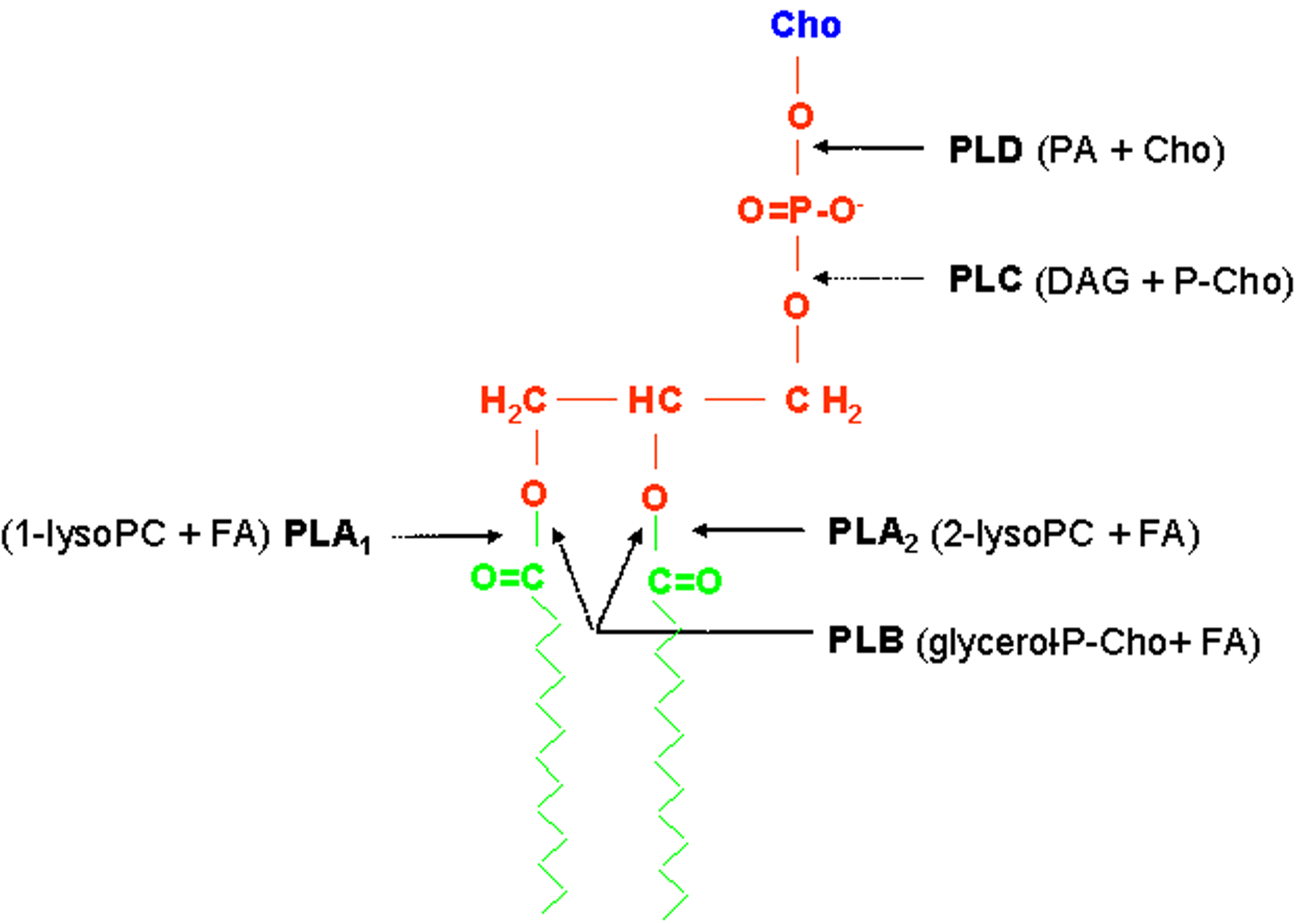Phospholipases.
Phospholipases are abundant enzymes which are found in all cells, and which play an important role in a wide variety of cellular processes. This huge family of enzymes is characterized by the way that they degrade the phospholipid substrate. As shown in the diagram below, four types of phospholipase are recognized, which are known as phospholipase A, B, C and D respectively.

Figure Caption: Hydrolysis of the phospholipid phosphatidylcholine by PLA1, PLA2, PLB, PLC and PLD. The arrows indicate the chemical bonds that are the targets for each type of enzyme, together with their respective hydrolysis products. Abbreviations are: Cho, choline; DAG, diacylglycerol; P-Cho, phosphocholine; FA, fatty acid.
We are interested in the phospholipase A2, which breaks down phospholipid substrates to give long chain fatty acids and lysophospholipid products. Important physiological functions for both these product molecules are known, and this makes the phospholipases A2 a particularly interesting family to study.
In addition to the catalytic function of these enzymes, many phospholipases A2 demonstrate biological effects which are independent of their ability to break down phospholipids. This may be due, at least in part, to of the way in which the phospholipases interacts with the target cell membrane. In membranes, the phospholipids are organized in a bilayer structure, and the preservation of the integrity of this structure is important for of the normal functioning of the cell. We are looking at non-catalytic mechanisms by which phospholipases A2 can perturb the structure of the bilayer, and thereby influence the activities of the cell.